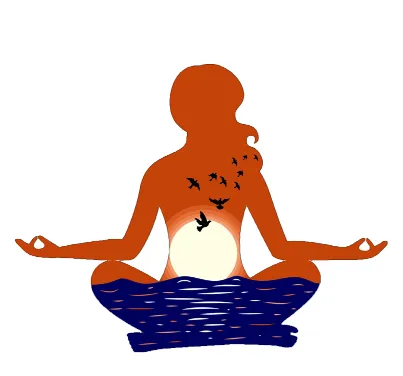
Yoga: A mirror to look at ourselves from within.
Yoga is a mind-body practice. Different styles of yoga combine physical postures, breathing techniques, and meditation or relaxation. Yoga is an ancient practice of physical and mental exercise. Yoga provides physical and mental benefits. It involves techniques such as movement, meditation, and breathing.
Regular yoga practice helps develop a person’s endurance. It provides physical and mental energy. It brings physical flexibility. Yoga is now becoming popular as a form of exercise all over the world. There are many types of yoga and many types of disciplines within this practice.
History
The first mention of the word ‘yoga’ appears in the Rig Veda. Yoga comes from the Sanskrit word ‘yuj’. Which means ‘union’ or ‘joining’. Yoga has been developing for about five thousand years. Yoga has also spread to countries in the West in the 1890s. Yoga became popular in Western countries in the 1970s.
Yoga encompasses the physical, mental, and spiritual aspects. Generally, yoga can be divided into six branches. Each branch of yoga represents a different focus and characteristics. The six branches can be divided as follows: Hatha Yoga, Raja Yoga, Karma Yoga, Bhakti Yoga, Jnana Yoga, Tantra Yoga.

Hatha Yoga: This is the physical and mental branch. It focuses on the body and the mental state.
Raja Yoga: This branch involves meditation and strict adherence to a series of disciplinary steps known as the eight limbs of yoga.
Karma Yoga: This is the path of service that aims to create a future free from negativity and selfishness.
Bhakti Yoga: Bhakti Yoga emphasizes the path of faith and discipline. In it, a person becomes mentally positive, emotionally clean, and tolerant. It emphasizes tolerance.
Jnana Yoga: This branch of yoga is described as the branch of knowledge, the path of the learned, and the development of wisdom through study.
Tantra Yoga: It is the path of rituals, ceremonies, or the completion of relationships.
Types of Modern Yoga
Modern yoga is associated with focusing on exercise, strength, agility, and breathing. It maintains physical and mental well-being. There are many styles of yoga. A person can choose a style of yoga based on his or her goals and fitness level.
There are different types and forms of yoga. It includes Ashtanga Yoga, Bikram Yoga, Hatha Yoga, Iyengar Yoga, Kripalu Yoga, Kundalini Yoga, Power Yoga, Sivananda, Vini Yoga, Yin Yoga, Prenatal Yoga, and Restorative Yoga.
Benefits of Yoga
According to a study a few years ago, many of those who practice yoga practice yoga to stay healthy. Yoga has many physical and mental benefits.
Yoga can be done to strengthen muscles. Yoga is beneficial for physical flexibility. It is also helpful in bringing ease in breathing. Similarly, yoga is very useful for preventing blood pressure and heart disease. Regular yoga is advisable to reduce stress, anxiety, depression, and chronic pain.
Regular yoga is beneficial for restful sleep. Yoga is also very beneficial for overall health. However, it is advisable to consult a doctor or a related subject expert before practicing yoga. People with any chronic disease should consult a doctor before practicing yoga.

Guidelines for Yoga
Some precautions should be taken before practicing any yoga. It is advisable to consult an instructor about the basic methods. There is no age limit for practicing yoga. You should only choose techniques that benefit your body’s capabilities. The best time to practice yoga is before breakfast. It is not advisable to practice yoga immediately after eating any food.
The yoga path should start with asanas, then pranayama, and then meditation. A quiet, clean place, surrounded by nature, is the most suitable environment for yoga. The person practicing yoga should wear loose and comfortable clothes. Which allows the body parts to move easily. 15 minutes of exercise is done for each yoga session. Similarly, 15 minutes session of breathing exercises and meditation should be done.
Drink a glass of water 15 minutes before exercising. Always breathe through your nose, both inhalation and exhalation should be done through your nose. Do not tense up while practicing yoga. You should rest for a while between each asana. If there is no suitable environment for practicing yoga, do not practice yoga.
In conclusion, yoga is an ancient practice. Modern yoga is developed to focus on inner peace and physical energy. Ancient yoga did not emphasize fitness as much. Instead, it revolved around achieving mental concentration and expanding spiritual energy.
You May like to Read more Blog
DDS Bioelectric Therapy – Drug-Free Pain Relief & Healing | Benefits & Uses
Halo Therapy: Benefits of Himalayan Pink Salt for Health, Skin, and Respiratory Wellness
Magical Mud Therapy and Its Benefits

Leave a reply